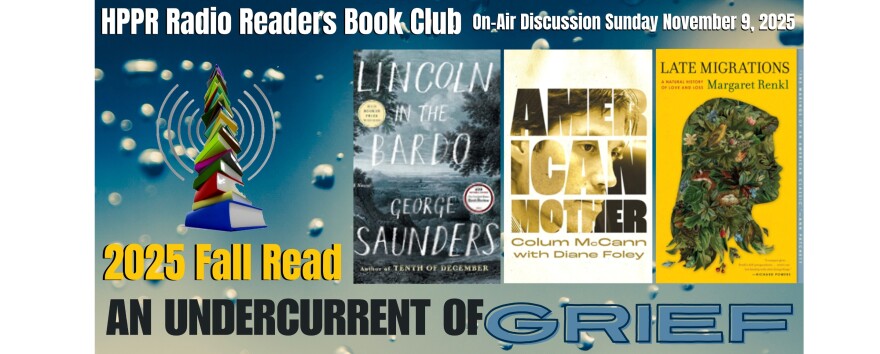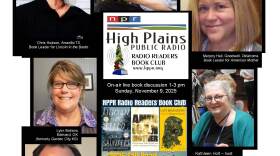Hello, Radio Readers! I’m Jane Holwerda from Dodge City KS. Welcome to 2022 and our kick-off for High Plains Public Radio Readers Spring Read: Graphic Novels—Worth a Thousand Words. For the next few months, we’ll be talking about the stories communicated in the graphic novels of Marjane Satrapi’s Persepolis; Nora Krug’s Belonging: A German Reckons with History and Home; John Lewis and Andrew Aydin’s March; and Yuval Harari’s Sapiens: A Brief History of Humankind.
We Radio Readers have embraced graphic novels in previous series but this is the first series where all the books take this form – the form of stories told in words and pictures, frame by frame, like a comic strip. And that’s how to read them, from left to right, frame by frame, and row by row—it’s your choice to explore the images or the text first, just like a comic strip, or for those of us of a certain age, a comic book. Which, essentially, is what a graphic novel is, an extended, maybe a little more complex, comic book.
When and where comic books originated varies, depending on the source – a quick query through your favorite browser is likely to lead you to sources that claim the 1830’s in Switzerland, the 1860s in England, or the 1930’s in the US. As for graphic novels, most sources place the late 1970’s as when the graphic novel emerged as a form in which cartoon frames and narrative conveyed stories to adults, but with more mature language, images, and themes, than with the traditional comic book. So—just a friendly heads’ up, Radio Readers – the graphic novels in our Spring 2022 Read may provide humor, but of the wry, even satiric, kind. And to be as clear as possible about our graphic novels? None of them are actually “novels” or even fiction. Instead, our choices are all non-fiction: an autobiography of growing up and out of war, another of seeking to redress guilt by association, a biography of an American Civil Rights leader, and, to wrap it all up, an exploration of what it means to be human….with such heady, and troubling, topics, it seems the images, those frames of illustrations, might provide some relief, some moments to pause, to consider and savor the words and their meanings.
In case anyone feels, well, hesitant or skeptical…no worries. I arrived late to graphic novels myself. I mean, books are supposed to be about words, after all—right? But if we think about it, we humans have historically and consistently communicated our stories in words and visuals – accompanying our speech with gestures and grimaces, painting cave walls, hides, pottery, walls, and railroad cars—by combining words and photos, graphs, sketches, illustrations—in books – especially textbooks—and in news and social media. How many of us express our reactions to a lecture or meeting by doodling in our notes? Some of us likely have apps for that… For me, once a teaching colleague introduced me to Spiegelman’s Maus and an Iranian colleague shared her copy of Persepolis my mind opened up. Is it the symbiosis between words and images, between author and artist? Is it the ways that images show what words can’t? the way that words frame nuances of the images? What makes artwork? What are the essential elements of story, anyway?
I’m excited for our conversations – about graphic novels in general, about the specific graphic novels chosen for our Spring 2022 Radio Readers Book series, and for the insights and perspectives of us Radio Readers.
Along with familiar voices of returning BookByters, we welcome new book leaders – among them, Fort Hays State University professor Kim Perez and Dodge City Community College’s Dr Gregory Roberts. Tune into to HPPR weekday mornings to hear book bytes and visit Radio Readers on High Plain Public Radio’s website, and at Radio Readers on Facebook to revisit current and past book bytes.
Join us – because this time, we not only have good reads, we’ve got good reads with views!
For HPPR’s Radio Readers, I’m Jane Holwerda, from Dodge City KS.









